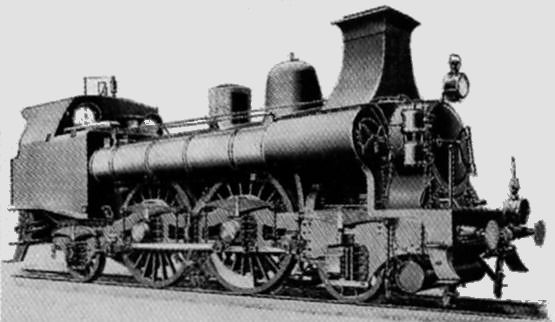|
| The Belgian Triple Boiler Gallery.
|
|
Updated: 13 May 2009
 
| |
 |
| Left: No 195, a Belgian 2-4-2 locomotive with a triple boiler.
This extraordinary machine was built in 1888 for the Belgian State Railways. Once more the aim was to fit more boiler capacity between the driving wheels, and in this case it was done by having two smaller boiler barrels each side of the main boiler.
The triple-boiler locomotive was built by the Société St Léonard of Liège in Belgium.
|
The boiler(s) worked at 130 psi, supplying two cylinders of 19.5in bore by 23.5in stroke. Total weight of engine and tender was 88 tons. The central boiler was 1.3 metres in diameter and the two lateral boilers 0.7 metre.
 |
| Left: The locomotive as originally built, with a rather strange chimney resembling a garden urn. It carries the number 200 at this point.
Steaming was poor, due to the indirect connection between the lateral boilers and the smokebox, and the Belgian State refused to accept it. At this point it gained its enormous chimney spreading over all three boilers.
|
 |
| Left: Fear me, earthling!
A front view of the beast. Despite the previous troubles, the State acquired the locomotive and it went into service as No 195.
"La trichaudière" was used exclusively on the Brussels-Ostend line.
Note sloping front to the central boiler, which projects out beyond the two lateral boilers, and the front covers of the two inside cylinders.
The locomotive was unpopular with its crews because of the inconvenient absence of a running-board, but this was a minor problem. The major problem was that one of the lateral boilers exploded in 1902, near the Ostend-Ville station, and that was the end of the career of No 195.
|
 |
| Left: Another view of No 195.
According to some critics, this was the ugliest locomotive ever constructed; such judgements are purely subjective, and all I can say is that it had some strong competition, much of which is to be found on this website.
|
No more locomotives like this were ever built. Some of the Franco-Crosti locomotives such as the Italian Gr 743 with preheaters each side of the boiler, resembled it but worked on quite different principles.










